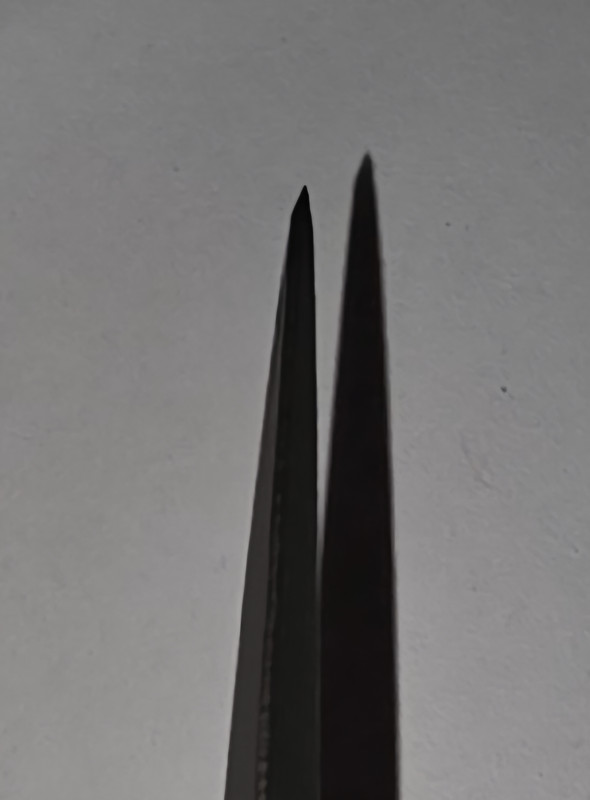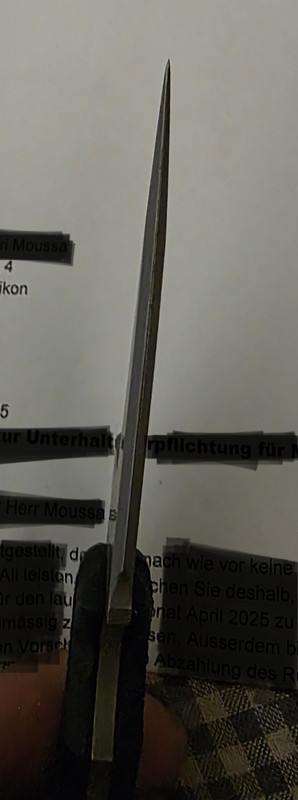- Joined
- Jul 2, 2023
- Messages
- 9
Esteemed forum members,
I recently purchased a Pikal-style knife from a American manufacturer; the blade steel is 80CrV2.
Initially, I was pleased with the purchase. The edge was exceptionally sharp, and the overall craftsmanship appeared promising. After a two-week carry period (without use), I applied mineral oil for maintenance. Upon closer inspection, I discovered a significant asymmetry in the false edge. The blade sides exhibited a considerable difference in bevel angle, extending to the tip. Given the $300 price point, this asymmetry is concerning. While I understand the manufacturing challenges inherent in this style of double-edged blade, the disparity is far greater than in comparable knives I've owned previously. The difference is not a minor 1-2mm; it appears significantly warped. Is this level of asymmetry considered acceptable?


I recently purchased a Pikal-style knife from a American manufacturer; the blade steel is 80CrV2.
Initially, I was pleased with the purchase. The edge was exceptionally sharp, and the overall craftsmanship appeared promising. After a two-week carry period (without use), I applied mineral oil for maintenance. Upon closer inspection, I discovered a significant asymmetry in the false edge. The blade sides exhibited a considerable difference in bevel angle, extending to the tip. Given the $300 price point, this asymmetry is concerning. While I understand the manufacturing challenges inherent in this style of double-edged blade, the disparity is far greater than in comparable knives I've owned previously. The difference is not a minor 1-2mm; it appears significantly warped. Is this level of asymmetry considered acceptable?


